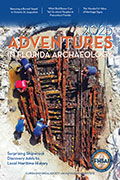Florida Frontiers Articles
Florida Frontiers: The Weekly Newspaper Articles of the Florida Historical Society is a weekly newspaper article covering history-based events, exhibitions, activities, places and people in Florida. The newspaper articles premiered in January 2014. We explore the relevance of Florida history to contemporary society and promote awareness of heritage and culture tourism options in the state.

Professional archaeologists, archaeology enthusiasts, and concerned citizens from throughout the state are opposing legislation currently being considered in Tallahassee.
House Bill 803 and Senate Bill 1054 would allow anyone who purchases a $100 permit to dig for historic artifacts in state owned waterways using a trowel. After dislodging the artifacts, a person could remove them, take them home, and even sell them.
Any context that archaeologists could provide for the artifacts and important opportunities to educate the public about our shared history could be lost.
“To understand the past in the fullest way possible, what is significant is not a particular object that we find, it’s what we find out about that object,” says Theresa Schober, president of the Florid... click title or here for the full article

In 1948, Earl Tupper introduced a new brand of airtight containers called Tupperware that allowed for food to be preserved and stored for longer periods of time.
No one really cared.
The revolutionary plastic containers with the patented “burping” seal sat on store shelves, and the company based in Leominster, Massachusetts saw little growth.
A woman named Brownie Wise came up with a marketing strategy that involved hosting home parties to demonstrate the many uses of Tupperware in a fun setting. She would train other women to host parties themselves, providing them an opportunity to earn money based on their sales.
Tupperware sales exploded around the country and in 1951, Wise was named vice president of marketing for the company. She spearheaded the effort... click title or here for the full article
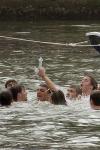
Since 1906, the city of Tarpon Springs has held a unique Epiphany celebration every January 6. Thousands of people converge in Tarpon Springs each year to participate in this religious tradition of the Greek Orthodox Church.
Tarpon Springs has more Greek people per capita than any other American city. Hundreds of Greek sponge divers and their families were brought to the town in the early twentieth century. While tourism has replaced sponge diving as the primary economic driver, the sponge docks remain active and the town retains a distinctly Greek character.
“This is like a Greek village here in America,” says Father James Rousakis, dean of St. Nicholas Cathedral in Tarpon Springs. “The people are very much in tune to their culture and their heritage. Adults that came fro... click title or here for the full article

In the 1960s, Dr. Robert B. Hayling was a leader of the Civil Rights movement in Florida. His former dentist’s office in St. Augustine is now a museum. Dr. Hayling died on December 20, 2015, at the age of 86.
One of Hayling’s last public appearances was at the Florida Historical Society Annual Meeting and Symposium on May 23, 2015, where he discussed his life.
Hayling grew up in Tallahassee, the son of a professor at Florida A&M University. At an early age Hayling became aware of racial inequities in America.
“To tease my grandmother a bit, I would ask her, ‘Grandmama, if black and white people can’t get along here on earth, how they gonna get along in heaven?’ And my grandmother would scream out ‘Cleo, come get this boy! God is gonna strike him dead!’ I’m still... click title or here for the full article
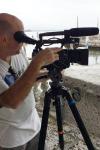
Every week at the end of this column, you are informed that this author is also the host of “Florida Frontiers: The Weekly Radio Magazine of the Florida Historical Society.”
Beginning Sunday, January 3, at 1:30 pm, “Florida Frontiers” will also be a television series broadcast on WUCF-TV Orlando, and other PBS affiliates throughout the state.
The first season of this television series will have ten episodes which will air monthly. Produced by the Florida Historical Society, each program will explore the same types of topics covered in this column and on the “Florida Frontiers” radio program.
“Wherever we go, people are very enthusiastic,” says Jon White, director of media production for the Florida Historical Society. “People are really into Florida history and cult... click title or here for the full article
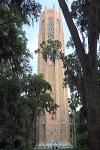
If sea levels were to rise to the point where the coastline of Florida was submerged, our peninsular state would become a series of islands. At the heart of one of those islands, a neo-Gothic tower of coquina and marble would rise 205 feet into the sky.
Bok Tower Gardens near Lake Wales is on one of the highest points in the state, 298 feet above sea level.
President Calvin Coolidge presided over the dedication of the Singing Tower and its adjacent bird sanctuary and gardens on February 1, 1929. The facility was conceived and built by Edward Bok as a gift to the American people for the opportunities he had been given.
Bok was born in 1863 in Dans Helder, Netherlands. He immigrated to the United States with his family in 1870. He grew from a boy who didn’t speak Engl... click title or here for the full article

Just blocks from the bustling urban setting of downtown Miami is an oasis of Classical beauty in a serene and idealized natural setting.
Known today as Vizcaya Museum and Gardens, the 40 room mansion surrounded by acres of meticulously landscaped gardens was originally the home of industrialist James Deering.
As early as the 1890s, the Deering family started wintering in St. Augustine. James Deering’s parents later moved to Coconut Grove, which would become part of Miami.
“James Deering was what’s known as an agricultural industrialist,” says Mark Osterman, guiding programs manager at Vizcaya Museum and Gardens. “His firm created agricultural farming equipment across the United States. It became one of the largest manufacturing firms in the entire world. He was vice... click title or here for the full article
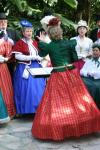
The Historic Rossetter House Museum and Gardens in Eau Gallie is presenting a free program of Christmas music and stories, Saturday, December 5, from 5:00 pm to 6:00 pm. The Dickens Carolers, dressed in Victorian Era costumes, will perform.
Christmas celebrations at the Rossetter House date back to the early twentieth century.
The last resident of the Rossetter House was Caroline P. Rossetter. In 1921, at the age of 23, she took over her father’s Standard Oil Agency, becoming a successful business leader just months after women received the right to vote in this country. She was the first female Standard Oil Agent, and the longest running, operating the business for 62 years.
During an interview conducted in 1980, Rossetter remembered her family hosting Catholic ser... click title or here for the full article
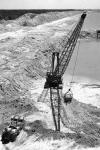
Ever since 16th century Spanish explorers realized that Florida was a large peninsula, people have dreamed of finding or creating a “shortcut” linking the Atlantic Ocean to the Gulf of Mexico.
By the early 19th century, a series of politicians and businessmen envisioned cutting a canal from one side of Florida to the other, creating a direct path for commercial boat traffic across the top of the peninsula.
The Cross Florida Barge Canal would save three days of travel for ships if they didn’t have to go all the way around the peninsula, and could instead cut right through the middle of the state.
In 1935, the Army Corps of Engineers made plans for the Gulf Atlantic Ship Canal, a 30-foot deep... click title or here for the full article
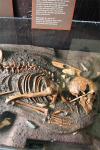
This Friday night, a woman who was ritualistically buried in Brevard County more than 7,000 years ago will be brought back to life.
Using some of the same forensic reconstruction techniques used to identify modern crime victims from skeletal remains, artist Brian Owens has created the Windover Woman sculpture that will be unveiled this weekend.
“This was a fun project,” says Owens. “I usually work in bronze, so this more lifelike silicone material was a new challenge for me.”
Owens had measurements and computer generated images created from scans of a Windover skull to guide his work. The resulting bust sculpture will allow visitors to look into the eyes of a prehistoric Floridian.
In the mid-1980s, nearly 200 remarkably well-preserved human burials together... click title or here for the full article

Personal attacks and name calling have a long tradition in American political campaigns. When polled, people overwhelmingly say they do not approve of such tactics, yet election results demonstrate that such negative campaigning is frequently successful.
When modern political commentators discuss the divisiveness of contemporary American politics, they often refer to Florida’s 1950 Democratic Primary as an example a particularly contentious campaign.
George Smathers defeated Claude Pepper in that hard fought contest for Florida’s seat in the United States Senate.
A cynical speech supposedly aimed at unsophisticated Florida voters was attributed to Smathers in the April 17, 1950 edition of Time magazine:
“Are you aware that Claude Pepper is known all over Wash... click title or here for the full article
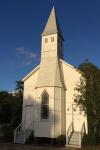
The LaGrange community was established in the mid-1800s, between what would become Titusville and Mims. The LaGrange Church, organized in 1869, is the oldest Protestant church on the east coast of Florida, from New Smyrna to Key West.
The original church was built in what is now the northern section of LaGrange Cemetery. A two story log church was built in 1872, at the church’s current location southwest of the cemetery.
The quaint, Wooden Gothic style LaGrange Community Church standing today was built in 1893, with boards surrounding the first floor of the log church. A pointed steeple and stained glass windows were added.
In addition to being a church, the building was a public meeting space, and the first public school in Brevard County.
Walking through th... click title or here for the full article

People visit the town of Cassadaga, Florida, to communicate with the dead.
The residents of Cassadaga are Spiritualists who believe that life continues after physical death, and that mediums can be used to communicate with those who have passed on to the Spirit World.
The religion of Spiritualism also embraces a belief in hands-on healing.
Spiritualism was very popular in the late nineteenth and early twentieth century. The activities of some fraudulent mediums and unqualified spiritual healers led to a distrust of Spiritualism as a whole in the 1900s.
“Because there was a lot of fakery going on at the turn of the century, a lot of Spiritualists were shut down,” says Kristin Congdon, a professor at the University of Central Florida who contributed to the book... click title or here for the full article
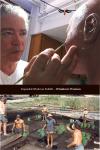
The Windover Dig in Titusville, Florida was one of the most important archaeological discoveries in the world.
Nearly 200 ritualistically buried bodies were discovered, wrapped in the oldest woven cloth found in North America. The amazingly well-preserved remains were determined to be between 7,000 and 8,000 years old, making them 3,200 years older than King Tutankhamen and 2,000 years older than the Great Pyramid in Egypt.
The initial discovery of ancient human remains occurred in 1982, during construction of the Windover Farms housing development near the intersection of I-95 and State Road 50. Three archaeological digs were conducted between 1984 and 1986, and the fascinating results of those excavations attracted international attention.
The only comprehensive e... click title or here for the full article
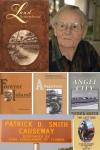
Patrick D. Smith’s 1984 novel “A Land Remembered” is one of the most popular books about Florida ever written.
The beloved Merritt Island author was born October 8, 1927, and died January 26, 2014. He would have been 88 this week.
Most popular novels have a year or so of commercial success, perhaps getting another boost when a paperback version comes out. Smith’s “A Land Remembered” has been a bestseller in Florida since it was first published.
“You know, that’s hard to understand sometimes,” said Smith. “Every year it gets more and more readers. It’s really gaining with young readers. Most of the schools in Florida now teach it. The young kids really like it, because they had no idea that Florida was ever like it’s depicted in ‘A Land Remembered.’”
It’s not... click title or here for the full article

Peggy Bulger wanted to follow in Stetson Kennedy’s footsteps. In fact, Bulger wrote her doctoral dissertation about him.
As head of the Florida Writer’s Project for the Works Project Administration in the 1930s and ‘40s, Kennedy traveled throughout the state documenting the traditions, folktales, and folk songs of Florida’s diverse population. He recorded the oral histories of Greek sponge divers in Tarpon Springs, Latino cigar rollers in Ybor City and Key West, Seminole Indians at Big Cypress, and many others.
Bulger came to Florida in 1976, at the age of 25, to become the first Folklife Coordinator for the State of Florida under the Department of State Division of Historical Resources.
“I started really delving into materials that were done during the WPA,” says B... click title or here for the full article

Local author William Culyer Hall is known for his dark but engaging stories about rural life in Florida. His new novel “Florida Boy” continues that tradition.
“Florida Boy” is a prequel to Hall’s 2010 novel “The Trouble With Panthers,” winner of the Florida Book Award for Best Popular Fiction and the Patrick D. Smith Award for Best Novel.
Both books focus on the fictional Rawlerson family, pioneers in Florida’s cattle industry.
Hall was inspired and influenced by Brevard County author Patrick D. Smith, author of the beloved Florida pioneer saga “A Land Remembered,” the story of the fictional MacIvey family. Before his death on January 26, 2014, Smith helped Hall with his work.
... click title or here for the full article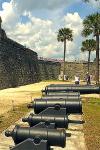
St. Augustine is the oldest continuously occupied European settlement in what is now the United States.
By the time Jamestown was established and the Pilgrims landed at Plymouth Rock, the people who originally founded St. Augustine were having grandchildren and great-grandchildren.
Don Pedro Menéndez de Avilés founded the city of St. Augustine on September 8, 1565.
Menéndez was personally motivated to come to Florida in search of his son Juan, whose ship was lost off the coast here. The Spanish Crown was anxious for Menéndez to reclaim La Florida from the French Huguenots, who had established a settlement called Fort Caroline near present day Jacksonville.
It was almost an accident that the Spanish found out about Fort Caroline.
“It really was the hung... click title or here for the full article
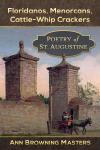
Three sisters entertained Union soldiers in their St. Augustine home during the Civil War, carefully gathering information. While two sisters continued to distract the soldiers, the third, Lola Sanchez rode a horse through backwoods and marshes to relay Union plans to Confederate forces.
Poet Ann Browning Masters is related to the Sanchez sisters and writes a poem from Lola’s perspective in the new book “Floridanos, Menorcans, Cattle-Whip Crackers: Poetry of St. Augustine.”
Masters will be discussing her work Friday evening at 7:00 at the Library of Florida History, 435 Brevard Avenue, Cocoa. The presentation is free and open to the public.
The Spanish established St. Augustine on September... click title or here for the full article
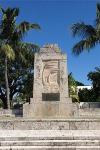
The Labor Day Hurricane that struck the Florida Keys on September 2, 1935 is the most powerful storm to ever hit the United States. With wind gusts estimated up to 225 miles per hour and a storm surge bringing waves as high as 20 feet ashore; the hurricane was devastating.
Nearly half of the 1,000 people who were on the Florida Keys when the hurricane arrived were killed. Among the dead were about half of the 300 World War I veterans working on road construction projects there for the federal government.
“In 1935, this is the height of the Great Depression, so a number of Americans were out of work,” says Ben DiBiase, archivist at the Library of Florida History. “FDR and the federal government were trying to get a lo... click title or here for the full article

The clear, strong, almost operatic singing of Benjamin Dehart can be heard accompanied by his skillful acoustic guitar playing at annual events such as the Florida Folk Festival in White Springs, the Fall Pioneer Jamboree in Barberville, Patrick Smith Day in Holopaw, the Cowboy Heritage Festival in Kissimmee, and the Will McLean Florida Folk Festival in Dade City.
Dehart, known throughout Florida and beyond as “The Cracker Tenor,” sings original songs inspired by Florida history, Seminole life, cowboy culture, and a longing for a simpler time when the natural Florida was less encroached upon by urban sprawl.
“I’m a native Floridian, I’m a second generation Floridian,” says Dehart. “If you’re born here and have some h... click title or here for the full article
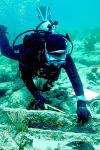
The slave ship Guerrero was lost off the coast of south Florida on December 19, 1827, with 561 Africans aboard.
Underwater archaeologists believe that the ship has been found.
The Diving with a Purpose Underwater Archaeology Program began in conjunction with the National Park Service and the National Association of Black Scuba Divers, to have African Americans participate in the search for the slave ship Guerrero.
That effort was filmed for the PBS documentary series “Changing Seas” in the episode “Sunken Stories.” The program is produced by WPBT2 in Miami, and can be viewed on their web site at changingseas.tv.
“One of the main stars of the documentary was the late... click title or here for the full article

An advertisement in the August 10, 1956 Florida Times-Union newspaper called Elvis Presley “Mr. Dynamite,” the “sensation of the nation,” and “the nation’s only atomic powered singer.”
Presley would soon be known simply as “the king of rock ‘n’ roll.”
During a pivotal point in Presley’s career, the future superstar did a series of performances throughout Florida. The tour came one month after his nationally televised appearance on the Steve Allen Show and one month before his first appearance before an audience of millions on the Ed Sullivan Show.
Five months before the 1956 Florida tour, Col. Tom Parker took over management of Presley’s career. The singer had enjoyed big hits with the songs “Heartbreak Hotel” and “I Want You, I Need You, I Love You.” Just before hi... click title or here for the full article
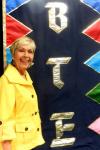
Before the annual presentation of “Mosquitos, Alligators, and Determination” begins, Lady Gail Ryan engages audience members, finding out where they are from and leading them in a high spirited “sing along” of Florida songs including “Where the Orange Blossoms Grow” and “She’ll Be Comin’ Down the Shell Road.”
As founder and director of the Brevard Theatrical Ensemble, Ryan is responsible for organizing the annual presentation of “Mosquitos, Alligators, and Determination.” The production, which changes every year, features a series of vignettes portraying stories of Florida history and culture, from native society to European contact to pioneer settlement to the early space program.
A native Floridian born in Miami in 1929, Ryan’s energy and enthusiasm for the history and c... click title or here for the full article







